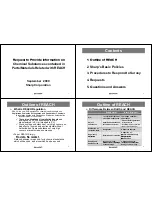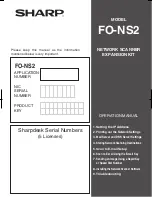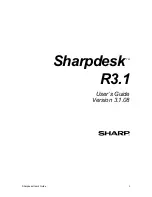
Printer Commands
Chapter 2
34
LDSII Programming Guide - 880015-0123
2.4.10 ^D566)n
(Select Temperature Units)
The
“^D566)” command is used to select the temperature unit of measure the printer will
use for displaying the print head temperatures in degrees. This command is always
processed first in a script or just after the
“^D564)” and “^D565)” commands by the printer
regardless of the placement within a script. This is helpful in forcing a unit of measure for
troubleshooting and support capabilities.
1
Fahrenheit
2
Centigrade
2.4.11 ^D567)filename
(Select Power-up Script)
The
“^D567)” command is used to select the script that is processed on a printer power-up.
It is used in conjunction with the
“^D720)” command to automatically process the selected
script on a power-up. Issuing the
“^D567)” without a parameter builds and lists the scripts
that have been saved into the printers flash memory. The filename may contain to a
maximum of 20 characters in length and include any character from ASCII 0x20 and 0x41 to
0x7A (alphabetical characters plus [\
]_’and SP (space character)) with the exception of the
caret (^) character.
Script filenames can not use a leading zero (“0”) or 0x30 characters.
2.4.12 ^D570)n
(Select Active Port)
The
“^D570)” command is used to select the printer’s active port. When the Autodetect is
selected the printer will automatically determine and set the port based on which port is
connected at powerup. If both serial and USB ports are connected, the autodetect will
select the USB as the active port. If autodetect is selected and neither the Serial nor the
USB is connected at power up, the Serial port will be selected as the active port. The
Autodetect feature will only determine the active port at power up and will continue to use
the selected port for the duration of the power up time.
The valid parameters for “n” are
listed below.
0
Autodetect (Serial/USB)
1
RS-232 Serial Port
2
USB Type 1 (serial port disabled)
5
Wired Ethernet (serial port disabled)
2.4.13 ^D581)n
(Select Stock Out Handling Method)
This command is used to select the procedure the printer will use when handling >STOCK
OUT< conditions. The valid arguments for “n” are listed below. A selection of “1” instructs
the printer to immediately halt on a >STOCK OUT< condition. A button press clears the
error condition and reprints the last label format.
A selection of “2” instructs the printer to
finish printing the current format before halting when a >STOCK OUT< condition occurs. A
button press clears the error condition and printing is resumed, if a print job is in process,
without reprinting the last script. If the printer could not finish the last script, the
>INCOMPLETE FORM< or 0x1D error response is generated along with the >STOCK
OUT< message. Once this occurs a button press is used to clear the error and the last
script that was incomplete is reprinted.
1
Immediate halt upon detection of stock-out.
Summary of Contents for LDS II
Page 2: ...This Page Intentionally Left Blank...
Page 3: ...This Page Intentionally Left Blank...
Page 14: ...x LDSII Programming Guide 880015 0123...
Page 18: ...2 LDSII Programming Guide 880015 0123...
Page 72: ...56 LDSII Programming Guide 880015 0123...
Page 92: ...76 LDSII Programming Guide 880015 0123...
Page 108: ...92 LDSII Programming Guide 880015 0123...
Page 112: ...96 LDSII Programming Guide 880015 0123...
Page 116: ...100 LDSII Programming Guide 880015 0123...
Page 119: ...LDSII Programming Guide 880015 0123 103 User Notes...
Page 120: ......
Page 121: ......
















































